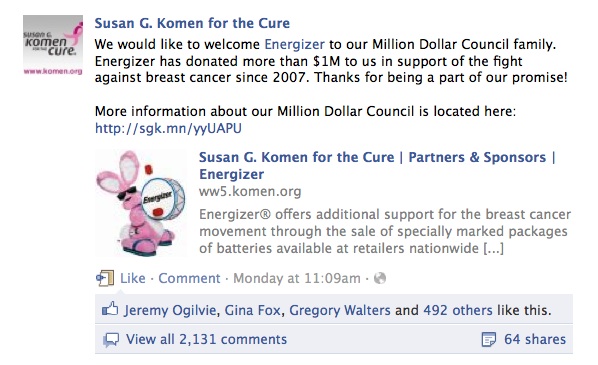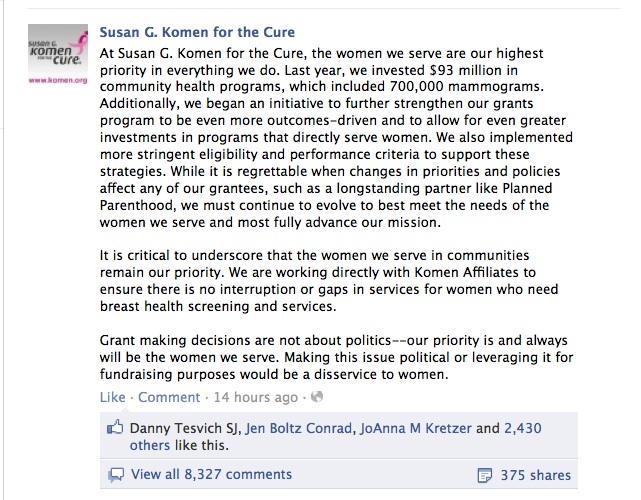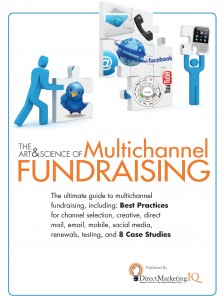
Nonprofits have been soldiering through shaky fundraising territory for the past several years. With the addition of “fear index” and “double dip” to the mainstream economic crisis vocabulary in the past few days, we can probably expect those challenges to stay around for a while and maybe even intensify.
So what do we do?
First, recognize that a lousy economy calls on nonprofits to be more than merely competent; a lousy economy challenges nonprofits to be extraordinary.
And second, as you roll up your sleeves on your extremely important fall fundraising campaigns against an uncertain economic backdrop, do the one thing you can: Don’t settle for 10. Turn it up to 11.
To get you started, here are 11 ways your nonprofit can turn up your fundraising from great to extraordinary in 2011:
1. Write letters, not direct mail. It’s surprisingly easy to forget that direct mail is really just a letter from one person to another. Often, the best direct mail fundraising doesn’t look or feel like direct mail at all – like a closed face envelope with an un-designed return address and an actual postage stamp. Or a letter that begins “Dear Evelyn,” not “Dear Friend.” Or a message that is driven by substance, not appearance.
2. Write emails, not eblasts. A “blast” is like dropping flyers out of an airplane – not particularly targeted, respectful or effective. When was the last time you heard someone say, “Wow, that mass email advertisement I received really made me feel special and inspired me?” It’s easy to hide behind your email marketing tools and fundraising templates. Remember that a fundraising email you send to your donors and constituents should be just as relevant, personal and carefully considered as an email that you might send from your own computer to someone you know personally. In fact, why not send your next fundraising email in plain text from your Executive Director’s actual Outlook account?
3. Give your constituents options for involvement. It’s important to recognize, create and value ways people can get involved in advancing your organization’s mission. A person may care about your issues and want to take action, but not be able to contribute financially right now. Don’t exclude them. There are plenty of ways they can help – you just need to offer them. And when an involved constituent is ready and able to give financially, you better believe that they’re going to give to the nonprofit that gave them a place at the table when they didn’t have two nickels to rub together.
4. Give your donors options for giving. A commonly used direct response ask array is 100%, 150%, or 200% of the donor’s highest or last gift amount. It’s a good upgrade-oriented ask strategy, but if not targeted appropriately, it can also be brutishly response-suppressing. Target your ask strategies by donor segment (such as current, lapsed, multi, single), and develop your ask around what you want to have happen for each particular donor segment. For instance if you are communicating with active donors who have given multiple times, then the upgrade-oriented ask array would be appropriate. However, if you are communicating with deeply lapsed donors, your immediate goal should be reinstatement, not an upgrade, in which case you may want to offer downgrade options to lower barriers to participation. And for donors who just can’t make single gifts at previous levels, now is a time to consider offering installment options.
5. Focus like a laser on donor retention. An organization’s donors are its most valuable asset. At a time when it’s more difficult to acquire new donors, and existing donors are most likely to lapse, it’s critical to retain the donors your organization has. Because the single most significant driver of donor retention is solicitation frequency, start by examining the frequency and quality of your organization’s donor solicitations and communications. If you’re only communicating / soliciting a couple of times a year, your organization is unquestionably leaking donors. Pick up the quality and frequency of your communications to help guard against attrition.
6. Start a monthly giving program. Monthly giving programs are powerful tools for retention and upgrading. Let’s say your average active donor gives $60 a year. When they join your monthly giving program with a $10 per month pledge, they double their annual giving. And because their pledge is processed via credit card, they can remain active donors and valuable partners in your mission almost indefinitely. Monthly giving programs are a lot of work to set up and manage, and monthly donors require special stewardship – but it’s nothing your “11” nonprofit can’t handle.
7. Be brave. Are you making the same formulaic argument for support season after season? Now is not the time to blend safely into the crowd. Put yourself out there. Challenge yourself creatively and inject some standout passion, color and personality into your communications.
8. Connect, for real. Development and membership people are trained to make the case for support, to explain. But explaining to donors what your nonprofit does, why it’s important, and what you achieve can quickly turn into a one-way conversation. Instead of building your case for support around what you need from your donors, build it around your donors’ needs. Once you begin to look at your issues through your donors’ eyes you can create a foundation for genuine two-way conversation and connection. This in turn will help you build deeper more lasting relationships with your donors.
9. Get serious about multichannel and integration by getting the help you need. The statistics speak for themselves. Online giving is the fastest growing channel. (To learn more, read Convio‘s Online Marketing Nonprofit Benchmark Index Study.) The mobile web is predicted to be bigger than desktop internet use by 2015. According to analysis from Blackbaud, nonprofits that add social media communications to their constituent communications mix experience increased fundraising results. And so the advice that nonprofits hear over and over is this: if you’re not where your donors, and future donors, are then you may find yourself wondering where they all went a few years from now. But it’s not actually very helpful advice, because nonprofits already know this. The obstacle isn’t buy-in to multichannel; it’s lack of technical resources and mountains of logistical hurdles created by outdated databases and websites designed in 1997. If you have problems like getting interactive content on your website, designing, targeting and sending emails with your current system and resources, or maintaining a meaningful social media presence, then you need to solve them. A great place to begin is by joining NTEN (the Nonprofit Technology Network) which can help connect you with resources to take your nonprofit’s tech to the next level as well as a community of people who eat, sleep, and breathe this stuff – and are generous about sharing what they know.
10. Acknowledge donor anniversaries. We celebrate wedding anniversaries to affirm relationships. We celebrate birthdays to say “we’re glad you’re here.” Why not celebrate donor anniversaries – the anniversary of your donor’s first investment in your organization’s work – to send the same message? Donor anniversaries are a great opportunity to strengthen donor relationships, raise additional funds for your organization, and strengthen donor retention.
11. Think hugs not shrugs. It’s great if you were already a 10 on your donor stewardship. But in this economy you can’t give up – you’ve got to turn up the love to 11. Be positive. Share your gratitude. Say thank you in special ways. It doesn’t cost much if anything, but the rewards are great. Kudos to one near and dear organization who will, literally, be giving hugs (not mandatory!) to each and every contributor to their annual fund this year. That’s what I call 11 thinking.
At the end of the day, we can’t control extraordinary economic events, but we can be extraordinary. How is your organization turning it up to 11?
Thanks for reading and connecting!
P.S. Just for fun, identify the photo reference with this post correctly and then tell us your favorite nonprofit (and why, if you’d like) in the comments section. If you’re the first, The Nth Factor will be very happy to make a contribution to the nonprofit you name.
 Online giving is the fastest growing direct marketing fundraising channel for nonprofits, but direct mail still accounts for the vast majority of funds raised. Of the nonprofits included in Target Analytics’ 2011 donorCentrics™ Internet and Multichannel Giving Benchmarking Report, direct mail comprised 79% of giving, while online accounted for just 10%.
Online giving is the fastest growing direct marketing fundraising channel for nonprofits, but direct mail still accounts for the vast majority of funds raised. Of the nonprofits included in Target Analytics’ 2011 donorCentrics™ Internet and Multichannel Giving Benchmarking Report, direct mail comprised 79% of giving, while online accounted for just 10%.















